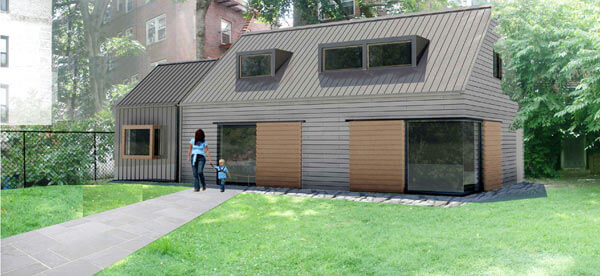By Alex Robinson
The city Landmarks Preservation Commission approved a $2.8 million plan to build a visitor’s center for Flushing’s historic John Bowne House in late November.
The 1,250-square-foot visitor’s center will be on the southeast corner of the property and will face the 17th-century house, which was built by Bowne, a pioneer in religious freedom whose principles contributed to the Bill of Rights.
The new facility will contain office space, a gallery that will double as a community meeting space and badly needed restrooms.
“Getting those things out of the 17th-century house will give us more room in the house for tours,” said Rosemary Vietor, vice president of The Bowne House Historical Society.
“The current rest room probably dates from the turn of the 19th century and the plumbing is extremely fragile. It is certainly not handicapped accessible. The water in the sink hasn’t worked for years. It’s one step up from an outhouse,” she said.
The city Parks Department has led a restoration of the exterior of the house, at 37-01 Bowne St., that started in the spring. Contractors recently uncovered a number of artifacts and historical details in the restoration work.
When some deteriorated portions of the house’s timber frame were replaced in late November, contractors found a heavy mud-like material that was used to insulate the house in the 1690s.
“It’s almost like concrete and it has animal hair in it. That’s interesting to see what they used for insulation in the 17th century,” Vietor said.
The historical society plans to send the animal hair away to a lab to have it identified.
Contractors also found the house’s original color after scraping off several centuries of paint jobs.
“It was interesting going through the various layers of paint to see what had happened over time,” Vietor said.
The house’s original layer was a cream color, said Vietor. The house was then painted citrine and later green.
“As you know styles change and the finish on the house was whatever the fashion of the time was,” she said.
Bowne first bought the land the house sits on in 1653. The exact date the house was built is up for debate. The house’s historical society first thought it was built in the 1660s, but timber professionals recently told them it might have been earlier.
The restoration of the house’s exterior is slated to be finished in May.
The Parks Department expects to break ground on the new visitor’s center in spring 2015, pending all approvals and permits.
Reach reporter Alex Robinson by e-mail at arobinson@cnglocal.com or by phone at 718-260-4566.


































